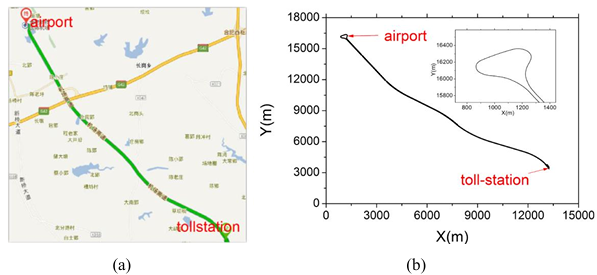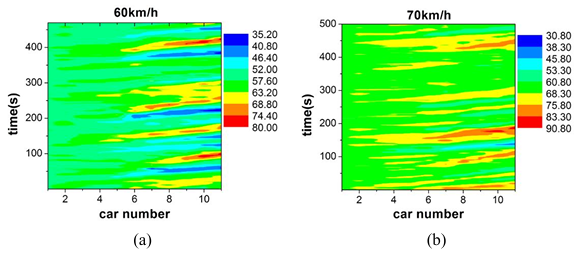Introduction
The 11-car-platoon experiment (High speed) was carried out on September 19, 2014 on airport highway in Hefei, China. See Fig. 1(a) for the map of the highway. The trajectories of vehicles measured by the GPS devices are shown in Fig. 1(b). One can see that the length of the highway is about 15km. The highway has three lanes in each direction, and the traffic on the highway is very light. Therefore, there is no interference from other vehicles that are not part of the experiment.

High-precision differential GPS devices were installed in each car to measure the speed and location of the cars every 0.1 s. The measurement errors of the GPS devices were within ±1 m for location and within ±1 km/h for velocity. To examine the errors of the data, we installed two GPS devices on the same car. The leading car has a cruise control system, and the car moves with constant speed in each run. The 10 following cars drivers are required to drive as normal, but overtaking is nor allowed. Due to the loop road in the airport area, the platoon has to decelerate but they do not need to stop. In the toll-station area, the platoon starts from zero speed. Twelve runs have been performed, and the speed of the leading car as well as sequence of the cars in each run have been changed.

References:
Huang, Y. X., R. Jiang, H. M. Zhang, M. B. Hu, J. F. Tian, B. Jia, and Z. Y. Gao. 2018. "Experimental Study and Modeling of Car-Following Behavior under High Speed Situation." Transportation Research Part C: Emerging Technologies 97:194-215.
Download


